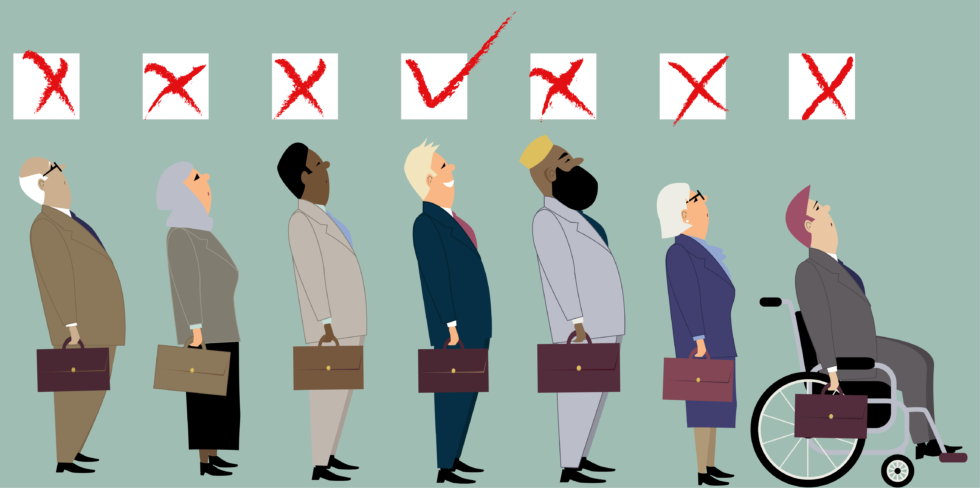
Employers are required to counter the risk of discrimination. Hence the question, “What can you do about discrimination in the workplace?
What is discrimination?
Discrimination means making unjustified distinctions in the treatment of people. Dutch law recognizes several grounds of discrimination. Still, it remains a tricky concept. This is because people can interpret and perceive situations, comments and experiences differently. What is clear is that the effect of discrimination can be profound, not only on the person it affects, but also on the workplace and business performance.
How do you recognize discrimination?
You recognize discrimination when someone is treated differently based on gender, religion or ethnicity, for example.ehandeld. For example, someone may be the target of hurtful jokes or comments, be bullied or excluded, always get the unpleasant jobs, be passed over for promotion, not get a contract extension, etc., be treated differently.

What can you do about it?
Employers are required under the Occupational Health and Safety Act – where this issue falls under “psychosocial workload (PSA)” – to combat discrimination in the workplace. The first step for an employer is to identify the risk of discrimination within their own organization through a Risk Inventory and Evaluation (RI&E). A Plan of Action then describes how you plan to reduce the risk. By the way, it is always good as an employer to inform yourself (or have yourself informed) about what the most effective approach can be for you to combat discrimination. Engage in conversation, not only with experts, but also with other employers, the aggrieved and employees.
How do you reduce the likelihood of discrimination?
Establish a code of conduct together with a works council, other employee representation or a specially established working group. When a code also belongs to the employees you create support, moreover you put labor discrimination on the agenda.
Establish a grievance committee and regulation that contains clear information about the procedure to be followed, to whom one can file a complaint and within what time frame it will be handled. The members of the grievance committee must, of course, be independent and knowledgeable.
Appoint a trustee. Reporting discrimination is a difficult step for many. When a person can first consult with and tell the story in confidence to an independent person, filing a complaint becomes less difficult.
Examine the role of executives. They must learn to recognize manifestations of discrimination, such as bullying, harassment, nasty comments, and know when and how to intervene.
Evaluate the policy regularly and adjust as necessary. This can be done by conducting periodic employee satisfaction surveys, raising the policy with the Works Council/staff representatives, prevention officers and/or other subject matter experts, and/or discussing the effectiveness of measures with employees. Actively involve everyone in your anti-discrimination policy and let everyone contribute ideas on how to make it better.

Tools
Does your policy comply with all regulations? Check this with the Self-Inspection Tool Work Pressure and Undesirable Behavior.
TNO’s Discrimination at Work Guide provides a clear, step-by-step explanation of employment discrimination. TNO also published the Internal Undesirable Behaviors Fact Sheet that is useful for support.
The report Inclusive Policies in the Workplace from the Integration & Collaboration Knowledge Platform discusses seven essential elements needed to achieve a more inclusive workplace.
For personal advice on employment discrimination, you can always contact Amsterdam – Divers & Inclusive.
